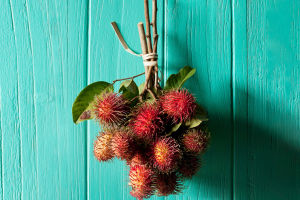Raspberries, with their vibrant red hue and tantalizingly tart flavor, are more than just a delicious fruit. Packed with nutrients and bursting with flavor, these small berries offer a range of health benefits and culinary possibilities.
Find out what you need to know about raspberries, from their nutritional profile to how to enjoy them in various dishes.
Nutritional Powerhouse
Rich in Vitamins and Minerals: Raspberries are an excellent source of essential vitamins and minerals. They are particularly high in vitamin C, which supports immune function and skin health. Additionally, they provide manganese, which plays a role in bone development and metabolism.
Antioxidant-Rich: These berries are packed with antioxidants, including quercetin and ellagic acid. Antioxidants help combat oxidative stress and protect your cells from damage caused by free radicals.
Fiber-Filled: Raspberries are a great source of dietary fiber, which aids in digestion and helps maintain a healthy gut. The fiber content also contributes to feeling full and satisfied, which can be beneficial for weight management.
Is It Good For health?
Supports Heart Health: The high levels of antioxidants and fiber in raspberries contribute to cardiovascular health. They can help reduce inflammation, lower blood pressure, and improve cholesterol levels.
Boosts Immune System: Rich in vitamin C, raspberries help strengthen the immune system, protecting the body against common illnesses and infections.
Enhances Skin Health: The antioxidants and vitamin C in raspberries support healthy, radiant skin. They help reduce the appearance of wrinkles and improve skin elasticity.
How to Enjoy Raspberries
Fresh and Raw: Enjoy raspberries fresh and raw as a quick and healthy snack. They’re perfect for popping into your mouth on the go or adding to a fruit salad for a burst of flavor.
In Smoothies: Blend raspberries into your favorite smoothie for a refreshing and nutritious drink. They pair well with other berries, bananas, and leafy greens.
Baked Goods: Incorporate raspberries into baked goods like muffins, cakes, and pies. Their tartness balances the sweetness of the batter, creating delicious treats.
In Salads: Add raspberries to salads for a touch of sweetness and color. They complement both leafy greens and cheese, such as goat cheese or feta.
As a Topping: Use raspberries as a topping for yogurt, oatmeal, or cereal. Their bright flavor adds a burst of freshness and enhances the overall taste of your breakfast or snack.
What's The Price?
Raspberry prices can vary based on seasonality and location. Here’s a general price range:
Fresh Raspberries: $4-$6 per pint. Available at most grocery stores, with brands like Driscoll’s and NatureSweet being popular choices.
Frozen Raspberries: $3-$5 per bag (10-12 oz). Brands such as Cascadian Farm and 365 by Whole Foods offer high-quality frozen options.
Raspberry Jam or Preserves: $4-$8 per jar. Look for brands like Bonne Maman and Smucker’s for delicious raspberry spreads.
How to Grow Raspberries?
Planting: Raspberries can be grown in a variety of climates, but they thrive in cooler regions with well-drained soil. Plant them in a sunny location, and ensure they have enough space to spread.
Care: Regular watering and mulching help keep the soil moist and suppress weeds. Prune the plants annually to promote healthy growth and fruit production.
Harvesting: Raspberries are typically ready to harvest in mid-summer. Pick the berries when they are fully ripe and easily come off the plant. Handle them gently to avoid bruising.
Raspberries are a delicious and nutritious fruit that can enhance your diet in various ways. Their rich nutrient profile and versatility make them a fantastic choice for boosting your health and adding flavor to your meals. If you want to enjoy them fresh or as a topping, raspberries are sure to delight your taste buds and support your well-being.


